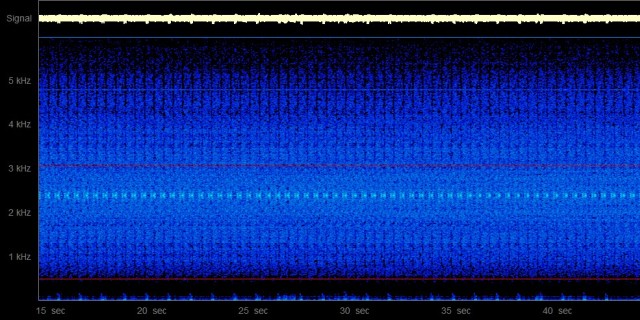Always wanted to know what kind of sounds we hear, when listening to the radio? Here are some example and I will try to add more.
ACARS: Aircraft Communications Addressing and Reporting System (or ACARS) is a digital datalink system for transmission of small messages between aircraft and ground stations via radio or satellite. The protocol, which was designed by ARINC to replace their VHF voice service and deployed in 1978, uses telex formats. SITA later augmented their worldwide ground data network by adding radio stations to provide ACARS service. ACARS will over the next 20 years be superseded by the Aeronautical Telecommunications Network (ATN) protocol for Air Traffic Control communications and by the Internet Protocol for airline communications. Listen to an Example:
Amtor: is a specialised form of RTTY protocol. The term is an acronym for Amateur Teleprinting Over Radio and is derived from the commercial SITOR system (Simplex Telex Over radio) developed primarily for maritime use in the 1970s. AMTOR was developed around the SITOR protocol in the early 1980s and is used by amateur radio operators today.

Listen to an Example:
ANDVT: is a voice encrypter used on secure HF radio circuits.
Listen to an Example:
ARQ: Automatic repeat request (ARQ) (or automatic repeat-query) is an error-control method for data transmission which uses acknowledgements and timeouts to achieve reliable data transmission over an unreliable service. An acknowledgement is a message sent by the receiver to the transmitter to indicate that it has correctly received a data frame or packet. A timeout is a reasonable point in time after the sender sends the frame/packet; if the sender does not receive an acknowledgement before the timeout, it usually re-transmits the frame/packet until it receives an acknowledgement or exceeds a predefined number of re-transmissions. Listen to an Example:
Clover: The CLOVER waveform offers high performance, error correction, and spectral efficiency. CLOVER is specifically designed for use over HF radio communications links. It may be used with virtually any modern HF SSB radio. However, certain special set-up and adjustment techniques are required to get maximum performance when using CLOVER. Listen to an Example:
Doka-B: Doka is a de facto standard used by Russian universities to download their experimental data, but the systems are not mutually interchangeable between universities. They were developed by the PLIS institute in Kaluga. ( Kaluga ) Doka-B is a combined hard wired modem interface and az/el controller at the ground station end, and is only available to Russian universities and is a protected commercial secret.
Each setup is unique to the particular university research project and multiple projects at different Russian universities have their own groundstations.

Listen to an Example:
Morse / CW: This code is a type of character encoding that transmits telegraphic information using rhythm. Morse code uses a standardized sequence of short and long elements to represent the letters, numerals, punctuation and special characters of a given message. The short and long elements can be formed by sounds, marks, or pulses, in on off keying and are commonly known as “dots” and “dashes” or “dits” and “dahs”. The speed of Morse code is measured in words per minute (WPM) or characters per minute, while fixed-length data forms of telecommunication transmission are usually measured in baud or bps. Listen to an example:
WSJT: is a computer program used for weak-signal radio communication between amateur radio operators. The program was initially written by Joe Taylor, K1JT, but is now open source and is developed by a small team. The digital signal processing techniques in WSJT make it substantially easier for amateur radio operators to employ esoteric propagation modes, such as high speed meteor scatter and moonbounce.

Listen to an JT65B (made with SimJT) Example:
